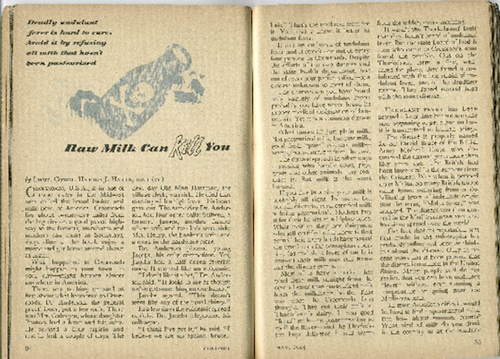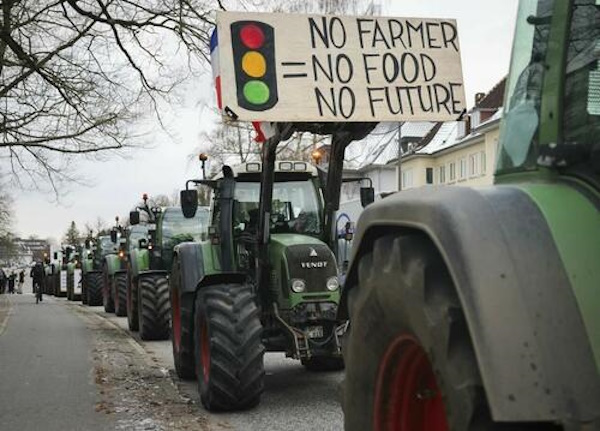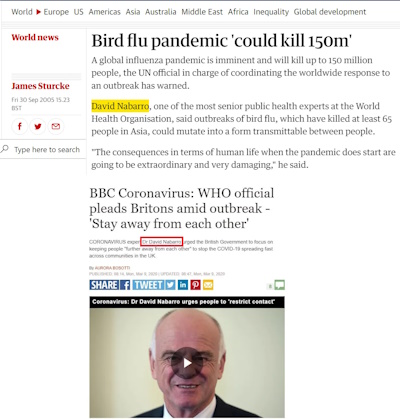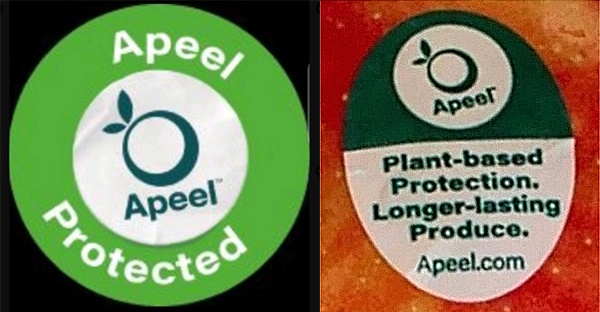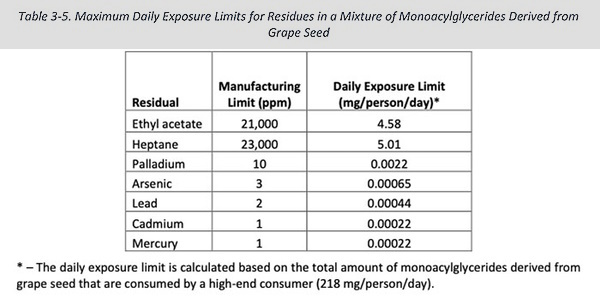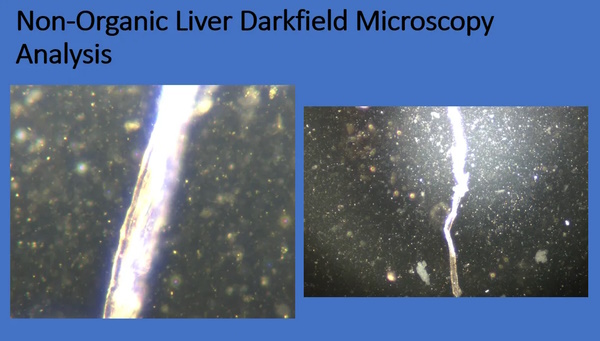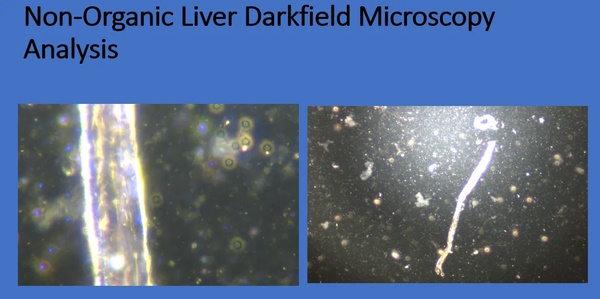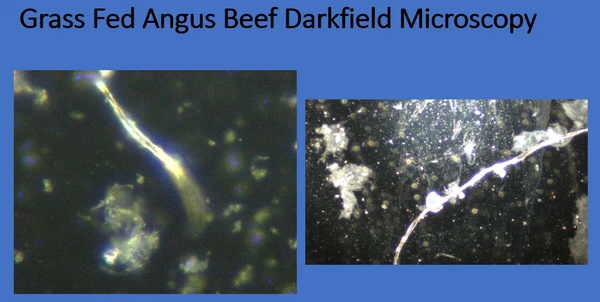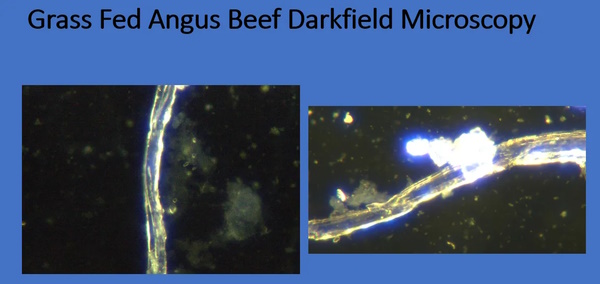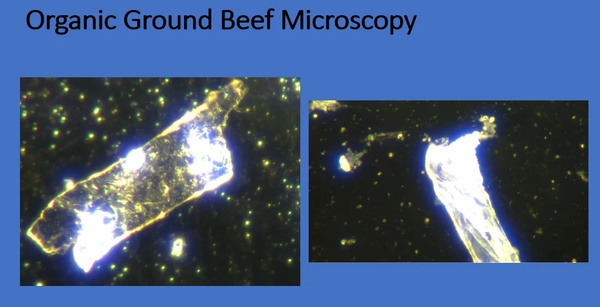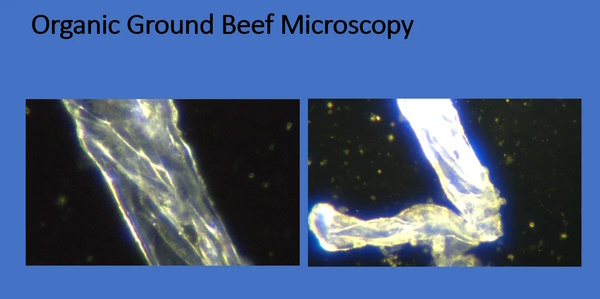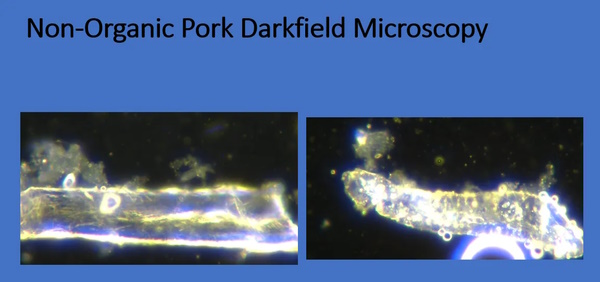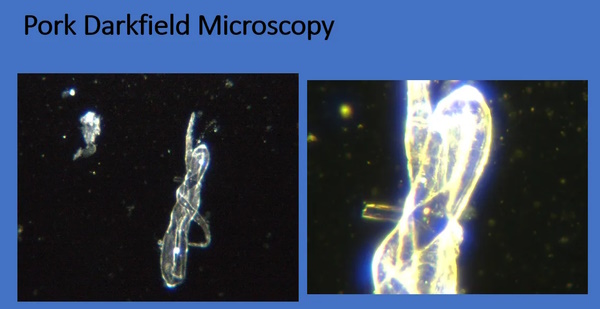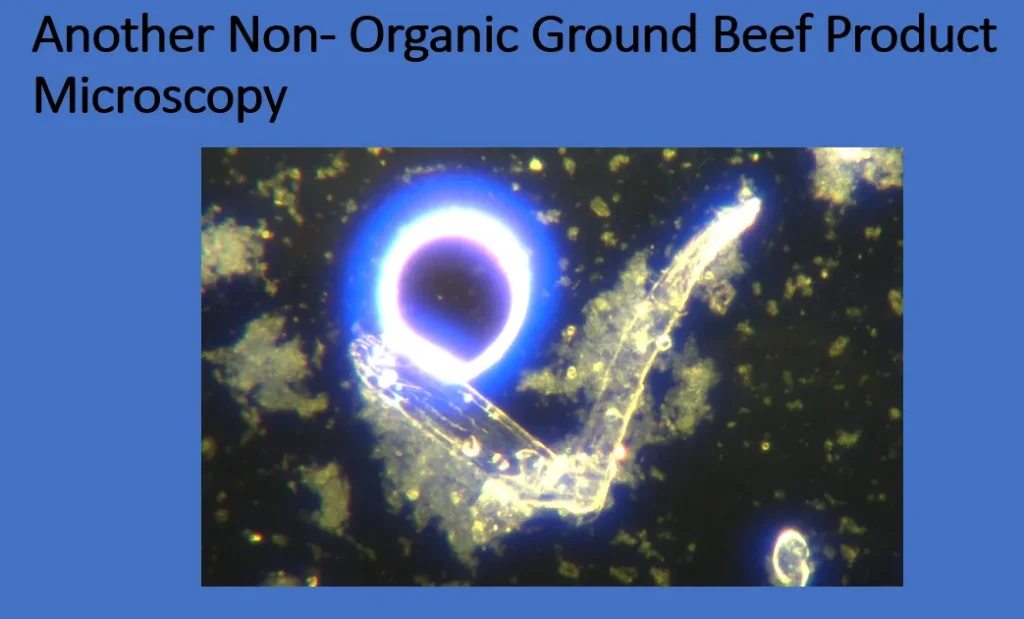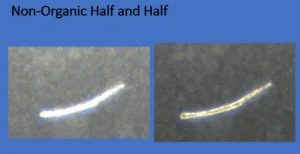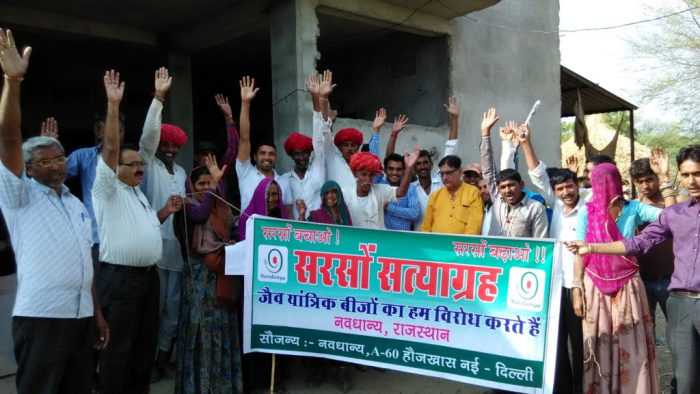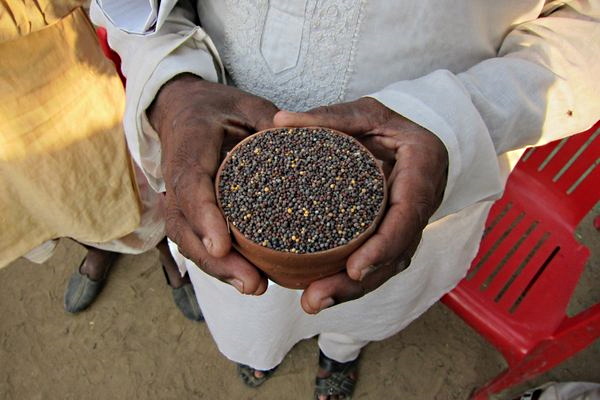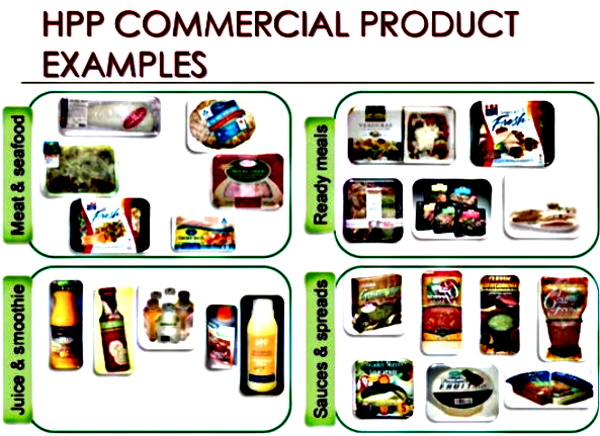~ Summary ~
Foreword
About Chitin
Fascinating discoveries by entomologist and biologist Philip Callahan on insect chitin and molecular bio-electronics
Fascinating discoveries of the Russian entomologist and bio-physicist, Viktor Stepanovich Grebennikov, concerning the anti-gravitational properties of certain insect chitins
Chitin and Chitosan in electricity production
Chitin and Chitosan in Nano-Medicine
Chitin and Chitosan in the Graphene-based Polymers of Nano-Medicine: Vaccines, carriers, etc
Chitin and Chitosan in the Hydrogels of Nano-Medicine
Hydrogels and Necro-Molecular Graphene Oxide Corona… towards Homo chimericus
Chitinization of daily life. Chitosan in packaging, cosmetics, wines, weight loss products, … and even certified organic products
Toxicity of Chitin, and Chitosan, in the Human Organism
Foreword
In this essay, my objective – transparent and stated – is to address the topic of chitin, allegedly “edible” and “nutritional”, and its toxicity in the human body as well as the topic of chitosan, a chitin derivative, which is widely used with various forms of metallic nanoparticles – including graphene nanoparticles (graphene oxide, reduced graphene oxide, carbon nanotubes, carbon quantum dots, etc.) – for so-called “medical” applications in the form of polymers, nanogels and other hydrogels.
The Alert is Biological. The obsession of the demented, eugenicist, vaccinalist Globalists is to transform every human being into a Homo chimericus with a new chimeric organism – based on graphene and chitin – allowing its connectivity… with the controllers. And who are they? Who are they? WHO?
Today, I wish, therefore, intensely, to take up the thread of this crucial subject because the generalized introduction of insects, of all kinds, in human (and animal) food is in the process of vertiginous acceleration… following the diktats of the eugenicist Bill Gates and the World Economic Forum – and its gang of mafiosi criminals under the leadership of the demented eugenicist Klaus Schwab.
Aldi, the discount supermarket chain, has just announced that it will start marketing food insects… in order to feed the poor! [102] Isn’t this touching?
Why such an acceleration of the “insectization” of food? Why such an acceleration of the “chitinization” of the human biological organism?
The term “chitin” is derived from the ancient Greek “χιτών, khitôn” meaning “tunic”.
First of all, to totally destroy agriculture/livestock farming which remains one of the foundations of the cultural diversity of the Peoples on the whole planet – except for the few animist, hunter-gatherer Peoples who have survived the civilizational carnage.
Then, in order to intoxicate the Peoples with a new vector of contamination – in addition to biocides, chimeras, industrial pollutants, radioactive waste, injections called vaccines, allopathic substances supposed to heal, etc., etc., ad nauseam. This new vector of contamination, in fact, is the chitin of insects which constitutes a poison for the human organism – at least, when it comes to notorious and daily accumulations.
Finally, in order to constitute a chimeric organism based on chitin, in addition to graphene, and based on chitosan, a derivative of chitin, which have been used for many years to constitute polymers, nanogels and other hydrogels – in synergy with various forms of graphene or other metallic nanoparticles. This artificial and synthetic chimeric organism will be remotely controllable via the Internet, thanks to the connectivity capabilities of both graphene and insect chitin.
Chitin and Graphene create, in the human organism, a tunic, an envelope, a shell, a bio-metallic-electronic web, imprisoning and bewitching, which will connect, entangle, the new chimeric organism with the “Web” – through the vectors of 4 and 5G – and 6G very soon. It is the fusion, promoted by the criminal Klaus Schwab, between the “physical, digital and biological identity” of humans.
By the way, Klaus Schwab – this handicapped person, as far as joy of living is concerned, and sales representative of the multinationals of the military-industrial complex – has never specified what difference could exist between a physical identity and a biological identity… in the Human.
How can these criminal psychopaths talk about “trans-humanism”… when their whole life is strictly devoid of ethics, mutualism, sharing, love, tenderness, joy of living, enthusiasm – that is to say, Humanism?
And you, dear readers, faced with this vertiginous acceleration towards Homo chimericus, what is your concept of “Humanism”? And what vision do you have of your “Humanity”?
About Chitin
Chitin (C8H13O5N)n is the second most abundant polysaccharide in the Biosphere after cellulose. There are three main sources of it – from an industrial point of view. [56]
The global chitin, and chitosan, market is estimated to be worth $4.2 billion by 2021, growing at a compound annual growth rate of about 15%.
Crustaceans. For human consumption throughout the world, about 10 million tons of crustaceans – of which there are 40,000 species in the Biosphere – are produced annually in fisheries or aquatic farms. 40% of this commercialized bio-mass is considered as waste: these are the exoskeletons whose chitin content is from 15 to 40% – depending on the species of crustaceans.
Mushrooms. Chitin constitutes between 1% and 41% of the mass of the cell wall of fungi. Although not all species of fungi contain chitin, it is present in some phyla such as Basidiomycetes (Basidiomycota), Ascomycetes (Ascomycota), Deuteromycetes (Deuteromycota) and Zygomycetes (Zygomycota).
Chitosan can be directly isolated from the cell wall of some fungal species without the need for acetyl group cleavage. The most extensively studied species for direct chitosan production include Absidia spp. (Zygomycetes), Aspergillus niger (Ascomycetes), Mucor rouxii (Zygomycetes), Rhizophus oryzae (Zygomycetes) and Lentinus edodes (Oak Lentin. Basidiomycetes). [56] The Mucoraceae, or white molds, also contain them.
Depending on the species, from 7% to 41% chitin can be found in their cell walls. For example, the Portobello, Agaricus brunnescens, contains up to 8% chitin in its tissues while the Oyster mushroom, Pleurotus ostreatus, contains up to 41%. [67]
Insects. Chitin-rich by-products constitute a new and sustainable source of commercial chitin, especially since hundreds of companies have started breeding, producing, processing and marketing insects for animal and human consumption.
According to van Huis (2003), there are 1400 species of insects that are considered edible throughout the world. According to Yhoung-Aree and Viwatpanich (2005), 164 species of edible insects are harvested and marketed, massively, in Thailand.
According to the study titled “The Potential of Insects as Alternative Sources of Chitin: An Overview on the Chemical Method of Extraction from Various Sources” [12], Bombyx eri (the Silkworm) contains 45% chitin and chitosan, Cryptotympana pustulata (a Cicada) contains 36.6% and Chyrysomya megacephala (the Oriental Blue Fly) contains 26.2%.
The cuticles of beetles generally contain 15-20% chitin. A recent study by Shin et al [99] was conducted on two beetles: the Yellow meal beetle (Tenebrio molitor) and Rhinoceros beetles. The chitin content was, respectively, 4.60%, 8.40% and 3.90% in the larva, adult and superworm of the Yellow meal beetle and, respectively, 10.53%, 12.70% and 14.20% in the larva, pupa and adult of the Rhinoceros beetle.
Subsequently, chitosan was obtained by deacetylation of chitin extractions, from all phases of both beetle species, and its content, from chitin, was, respectively, 80.00%, 78.33% and 83.33% in the larva, adult and superworm of the Yellow meal beetle, and 83.37%, 83.37% and 75.00% in the larva, pupa and adult of the Rhinoceros beetle.
As for other industrially produced edible insects, the larvae of the Black soldier fly (Hermetia illucens) contain 35% chitin. [57] Adult insects of the House Cricket (Acheta domesticus) contain 7% chitin. The larvae of the Giant Woodworm (Zophobas morio) contain 4-6% chitin. [59]
According to Guinness, the record, recorded, animal intensity was a cloud of 12.5 trillion locusts of the species Melanoplus spretus – the Rocky Mountain Locust. This gathering of locusts weighed about 27.5 million tons – including several million tons of chitin.
For grasshoppers and locusts, depending on whether they are males or females, the chitin content is, approximately: 6-10% for the Cevenol Oedipod (Celes variabilis); 10-12% for the Decticus verrucivore (Decticus verrucivorus); 5-8% for Melanogryllus desertus; 7-8% for Paracyptera labiata. [97]
In fact, according to approximations, supposedly scientific, the natural bio-synthesis of chitin, in the Biosphere, would be of the order of some 100 billion tons – annually. In fact, if we are to believe them, «In nature, the chitin polysaccharide is synthesized enzymatically by the transfer of an N-GlcNAc glycosyl from uridinediphosphate-N-acetyl-D-glucosamine to the chitodextrin acceptor ». It would seem, then, that Mother Earth’s Pathways can be very elaborate, intricate, implicate – and intentional. [66]
Chitin also exists in algae, fish, corals, amphibians and some vertebrates. [26]
Fascinating discoveries by entomologist and biologist Philip Callahan on insect chitin and molecular bio-electronics
Philip Callahan [50] – an entomologist and biologist of genius, from the USA, who has done much work on soil paramagnetism as a factor in agricultural fertility [49] – has been extremely interested in chitin as a communication carrier in insects. In particular in his 1975 book “Tuning in to Nature: Solar Energy, Infrared Radiation and the Insect Communication System” he expounds his theory that insect skeletons are like thermoelectric coated dielectric waveguide antennas. His biophysical work consists, among other things, of a study of molecular bioelectronics in the insect world.
Philip Callahan is one of my heroes and I have all of his published works in my library of several thousand books. Philip Callahan is one of the most authentic scientists of the last century: that’s why he was despised by the neo-Darwinist sect. One of Philip Callahan’s research topics – which sent all agronomists of agrochemistry into uncontrollable states of hysteria – was to find out why insects never destroy healthy plants growing on healthy soils not oxidized by agricultural chemistry.
Philip Callahan is the author of some 40 books and other publications – between 1965 and 1984.
Philip Callahan had already exposed his theory in a study published in 1968 and entitled “Insect Bioelectronics: A Theoretical and Experimental Study of Insect Spines as Dielectric Tubular Waveguides”. [60]
This is a very technical study and here are the first two paragraphs of its presentation. «A new concept of the insect communication system is based on the electrical characteristics of the insect exoskeleton and the configuration of the various spines and sensillae that protrude from the insect exoskeleton. The morphology and electrical characteristics of the spines and sensillae on the insect antennae indicate that they are tubular dielectric waveguides acting as aerials for the detection of certain light and IR frequencies. In order to test these theories, various infrared and visible radiations are being utilized and the insect subjected to wavelengths in the visible, near (NIR), intermediate (IIR), and far infrared (FIR) regions.
Photographs of moths in full flight demonstrate that the moth antennae has considerable stability in flight. The formulas for determining the resonant modes of dielectric aerials were applied to the dimensions of the antennal spines of the night-flying moths. The results invariably calculated out in the visible:, infrared, or microwave region. The insect exoskeleton is covered with a waxy layer which has inherently the characteristics known to physicists as thermoelectret properties. Beeswax is one of the most efficient thermoelectrets. The insect exoskeleton has a dielectric constant between 2 and 3, the dielectric constant most expected for an efficient waveguide design in the visible and infrared region.»
This is how Philip Callahan – a top-secret radio communications officer during the Second International Slaughter of 1939/1945 – told in an interview in December 2000 what led him in life to make essential discoveries about the foundations of healthy agriculture.
«We are still working on projects, which means that eventually we will be able to generate frequencies that will attract insects. My interest in paramagnetism began with a study of sacred places. I visited these sites all over the world—Catholic, Buddhist, Moslem, even Australian Aboriginal sites. I noticed that the plant growth was always better at these places, which always seemed to involve rocks. Further investigation revealed that these rocks were highly paramagnetic.
The point is that this force was already there. I didn’t discover it. It is there to be harvested. The archaeologists would call this « gathering ». Good farming is not synthetic; it must involve working with nature rather than with synthetic poisons. Paramagnetic materials are there to be harvested. Good farming is “gathering”.
In terms of the electromagnetic work, what I did there was to look at the insects’ antennae, because I was experienced in radio technology. I spent the War in Ireland at a top-secret radio station. The system I worked with was not a solid-state system that you turn on and it keeps working. It was a vacuum tube system, and it worked for 24 hours a day for two years to keep the coastal command planes finding their way home. I had to keep this system in there at all times. If I made a mistake, there might be 300 dead pilots. I was tied to that station, but I learned a lot about radio.
Eventually I looked at the insects’ antennae system and started experimenting. A simple US$2 experiment put me on the right track. I took a corn plant and used a box to diffuse the scent from the plant. Beside the box I placed a piece of hairy cloth (which was hairy like corn silk) and shone a blue light on it. Out of 2,000 eggs laid by the corn worm moth, 1,990 were laid on the piece of hairy cloth instead of the corn plant.
From this simple experiment, I realised that the energy from the light was combining with the energy from the scent and raising the power of the scent far higher than what it was at the plant or point of origin. I realised that scent was involved and that scent was really acting as an oscillator. It’s all common sense. If scent is an oscillator, then you start looking for the frequency. The infrared part of the spectrum was the obvious choice.
The problem with gaining acceptance of these new concepts relates to the fact that entomologists are tied to 100 years of olfaction theory, which does not cover the concepts of scent and frequency. With paramagnetism, you simply need to apply a highly paramagnetic crusher dust to see the results. Farmers are practical scientists: if it works, they do it. With the infrared work it involved disturbing the status quo, and that’s a lot harder task.» [135]
Philip Callahan’s groundbreaking work on insects and infrared radiation is an important step in understanding the intimate correlation between nutrition on the one hand, and the pressure exerted by so-called “insect pests” on the other – and that is just killing dumb plants… especially, the plants of chemical and toxic agriculture.
According to James L. Oschman, Ph.D., Nora H. Oschman of Nature’s Own Research Association [98]: «Callahan’s research has shown that almost all scents operate by stimulation of the C=H double bond. Both light and low frequency sounds (such as the buzzing of a mosquito) can vibrate or “stretch” these C=H bonds in such a manner that the scent molecules emit in the infrared region. For example, ants emit sound around 5 Hz (this is caused by the rapid tapping of their antennas on the ground or on the antennas of other ants). This tapping stimulates emissions by scent molecules the ants lay down to create trails so they can follow each other. When they greet each other, ants can distinguish animals from the same colony by the stimulated emissions from the Dufours gland, which contains a recognition substance. Bees, mosquitoes, flies, crickets, and locusts each emit specific frequencies by the beating of their wings. The stories of the ways these insects use these sounds to stimulate scent molecules in their environment is one of the most fascinating tales of natural history, and is thoroughly documented in Callahan’s writings. His research is an example of how much can be learned by combining the keen eye of a naturalist with sensitive biophysical measurement techniques.
Callahan recognized that infrared signaling has many applications beyond insect communication. The concept of bioelectromagnetic communications is receiving increasing attention in the scientific community. For example, see “Bioelectrodynamics and Biocommunication” by Ho, Popp and Warnke and a series of studies on cellular infrared cellular “Vision” by Albrecht-Buehler. Over the years scientists who have published in Frontier Perspectives have written a number of key papers on this topic. As examples, see the work of Benveniste, C. W. Smith and Popp.»
Philip Callahan has discovered that plants emit infrared radiation that amplifies odorous molecules that are then detected by the insects’ antennas. He also discovered that healthy plants (those of organic agriculture) emit a different signal than unhealthy plants (those of synthetic agriculture). And since Mother Nature is very “natural” and “organic”, in her Biospheric ways, she sends hordes of insects to “ravage” the unhealthy plants of toxic – nutritionally deficient – agriculture. This forces the toxic farmers to try to exterminate these insects with insecticide forces.
It is a vicious circle because the insects always manage to bypass the insecticides – that is, to metabolize them… while remaining alive.
What’s more, Philip Callahan argues that – just like insect antennae – plant roots act as dielectric wave guides:
«Paramagnetic force is light from rocks for the roots. The rock is actually a transceiver, collecting magnetism from the cosmos and throwing it back out to the roots. If you take a paramagnetic rock and put it into Dr [Fritz-Albert] Popp’s lab in Germany and measure it with his instruments which count photons one at a time, you’ll find that a highly paramagnetic rock puts out 2,000 to 4,000 photons. If you put that rock with some compost, if you treat it organically, it goes from 2,000 to 4,000 photons to 400,000 photons. Now you are generating a light for roots. Roots are wave-guides, just like the antennae on insects. If you clean off the roots and shine a light on them, they’ll wave-guide just like a fibre optic. Dr Popp has a US$100,000 instrument to measure light in the form of photons.
I can demonstrate the phenomenon with a $200 instrument called a pinhole camera. You just drill a hole in the lens cap and tape a rock to the camera in total darkness. In 3 weeks, you can develop a film that will show lights with every colour in the rainbow. There are so few photons coming off, you have to leave it there for three weeks to get it, but the film is sensitive to light, and if you leave it there long enough you’ll get a picture. This is irrefutable proof that paramagnetic rock generates light. Remember that plant roots are there for three months’ minimum, so they get plenty of light.»
Fascinating discoveries of the Russian entomologist and bio-physicist, Viktor Stepanovich Grebennikov, concerning the anti-gravitational properties of certain insect chitins
«Insects captured “there” disappear from test tubes, boxes, and other receptacles. They disappear mostly without a trace. Once a test tube in my pocket was crushed to tiny bits, another time there was an oval hole in the glass, with brown, as though “chitin” edges-you can see it in the picture. Page 13 of 35 Many times I felt a kind of burning or an electric shock inside my pocket-perhaps at the moment of my prisoner’s “disappearance”. Only once did I find a captured insect in the test tube, but it wasn’t the adult ichneumon with whiterings on its feelers, but its… chrysalis, i.e. its earlier stage. It was alive-it moved its belly when touched. Much to my dismay, it died a week later.»
With regard to the function of chitin in the Biosphere, it is also interesting to mention the research of the late Russian entomologist, Viktor Stepanovich Grebennikov, (1927-2001), who lived in Novosibirsk. This scientist was declared insane by conventional scientists, and devoid of the slightest imagination, when he claimed to have invented an anti-gravitational platform inspired by certain physical characteristics of certain insects, namely those correlated to chitin and the honeycomb structure… [53] [54] [55]
… namely hexagonal shapes… just like the carbon hexagons of graphene. What a coincidence!
In the summer of 1988, Viktor Stepanovich Grebennikov examined under the microscope the microstructure of the lower surface of the wing envelope of a beetle and became interested in «a solid, honeycombed, exceptionally structured, extremely orderly and unmistakable multidimensional composition that looked like it had been pressed by a complicated automatic machine ».
Viktor Stepanovich Grebennikov is the author of a book entitled “My World” written in 1997.
In many sections of this book, he describes the remarkable properties of the elytra of beetles and ketoons. For example, some species of the genus Agrilus, of the Order Coleoptera, have a chaotic honeycomb structure on the inner surface of the elytra.
According to an introduction by N. Cherednichenko – a biophysicist of the Russian Academy of Medical Sciences: «Back in 1988 he discovered anti-gravitational effects of the chitin shell of certain insects. But the most impressive concomitant phenomenon discovered at the same time was that of complete or partial invisibility or of distorted perception of material objects entering the zone of compensated gravity. Based on this discovery, the author used bionic principles to design and build an anti- gravitational platform for dirigible flights at the speed of up to 25 km/min. Since 1991-92 he has used this device for fast transportation. »
Photographs of Viktor Stepanovich Grebennikov, taking off with his anti-gravitational platform, are available on the various sites having the courage to propose his research – in French and in English.[52][53][54][55]
According to some rumors, the Russian Army would, have developed Viktor Stepanovich Grebennikov’s invention. [137]
This is how Viktor Stepanovich Grebennikov described his discovery:
«In the summer of 1988, as I was examining under a microscope the chitin shells of insects, their pinnate (feathery) feelers, and the thinnest structure of butterflies’ wings, I got interested in an amazingly rhythmical microstructure of one large insect detail.
It was an extremely well ordered composition, as though pressed on a complex machine according to special blueprints and calculations. As I saw it, the intricate sponginess was clearly not necessary either for the durability of the detail, or for its decoration. I had never observed anything like this unusual micro-ornament either in nature, in technology, or in art.
Because its structure is three-dimensional, so far I have been unable to capture it in a drawing, or a photograph. Why does an insect need it? Besides, other than in flight, this structure at the bottom of the wing case is always hidden from the eyeno one would ever see it properly. Was it perhaps the wave beacon with « my » multiple cavernous structures effect? That truly lucky summer there were very many insects of this species, and I would capture them at night: neither before, nor after was I able to observe these insects.
I put the small, concave chitin plate on the microscope shelf in order again to examine under strong magnification its strangely star-shaped cells. I again admired this masterpiece of nature, and almost purposelessly placed it on top of another, identical plate that had the same unusual cells on one of its sides. But no! -the detail broke loose from my tweezers; for a few seconds it hung suspended above the other plate on the microscope shelf, turned a few degrees clockwise, slid to the right, turned counterclockwise, swung, and only then abruptly fell on the desk.
You can imagine what I felt at that moment… When I came to my senses, I tied a few panels with a wire-it wasn’t an easy thing to do, and I only succeeded when I positioned them vertically. What I got was a multi-layered chitin block. I put it on the desk. Even a relatively large object-such as a paper tack-could not fall on it-something pushed it up and aside. When I attached the tack on top of the “block”, I witnessed such incredible, impossible things (for example, the tack for a few moments was lost from sight) that I realized it was no beacon, but something else entirely. And again I got so excited that all the objects around me became foggy and shaky. It was with a huge effort that I managed to pull myself together in a couple of hours and continue working. So, this is how it started. »
Viktor Stepanovich Grebennikov is the co-author, with Russian Professor V. F. Zolotariov, of a study entitled “Phenomenon of the interaction of many-cavity structures with the living system”. The so-called “Cavity Structures Effect” is an example of the interaction of De Broglie waves with biological systems. According to Professor Zolotariov, the overall motion of electrons in a solid body produces De Broglie waves. The cavities inside the body become resonators for these waves and consequently a source of standing De Broglie waves. The field is produced by the cavities which are arranged according to a certain rhythm, in a given space, which reinforces the resonance of the effect (in this case we mean, not rhythm in time, but rhythm in space, in a similar way, we say that architecture is frozen music).
«The result? Energies of a different character appear, for example from an arrangement of paper tubes, honeycombs and so on. The body reacts to these different energies and physiological changes can occur ». Viktor Stepanovich Grebennikov in an article published in 1984 in the famous and venerable Russian beekeeping magazine “Pchelovodstvo”.
It is very interesting to underline this evocation of a different energy emerging from a honeycomb structure because it is, of course, also the hexagonal form of graphene – a form of Carbon whose atomic number is 6.
See my essay“Au sujet du 666, du Carbone, du Graphène et de la Bête”. [96]
According to the US astrologer, Michael Heleus, who developed “l’astrosonics”: «I read Grebennikov’s story and saw that his findings could be applied to a variety of situations, including the secret of Stradivarius violins. As Navygary discovered, their wood was soaked in sea water until the lignin was almost completely replaced by silica and salts, making the wood like crystal. It was then covered with a varnish containing insect chitin. I believe that this emitted a wealth of harmonics (up to the highest) of Grebennikov/De Broglie gravity waves and that the Stradivarius thus acquired the hyperdimensional resonance for which it is famous.»
I also invite readers loving off-beaten paths and wishing to educate themselves – and to understand what happens when graphene oxide destroys the natural electro-magnetic field of humans – to consult all the works related to bio-photons, namely the researches of a plethora of scientists including Alexander Gurwitsch and Fritz-Albert Popp [51] – who, by the way, collaborated with Philip Callahan.
In conclusion of this section, I invite all those who would be inclined to pass by – because of the extreme “eccentricity” of Viktor Stepanovich Grebennikov who goes as far as to evoke processes of invisibility – to consult this recent study entitled “Understanding the structural diversity of chitins as a versatile biomaterial”. [126]
«Chitin is one of the most abundant biopolymers, and it has adopted many different structural conformations using a combination of different natural processes like biopolymerization, crystallization and non-equilibrium self-assembly. This leads to a number of striking physical effects like complex light scattering and polarization as well as unique mechanical properties. In doing so, chitin uses a fine balance between the highly ordered chain conformations in the nanofibrils and random disordered structures. In this opinion piece, we discuss the structural hierarchy of chitin, its crystalline states and the natural biosynthesis processes to create such specific structures and diversity.
Among the examples we explored, the unified question arises from the generation of completely different bioarchitectures like the Christmas tree-like nanostructures, gyroids or helicoidal geometries using similar dynamic non-equilibrium growth processes. Understanding the in vivo development of such structures from gene expressions, enzymatic activities as well as the chemical matrix employed in different stages of the biosynthesis will allow us to shift the material design paradigms. Certainly, the complexity of the biology requires a collaborative and multi-disciplinary research effort. For the future’s advanced technologies, using chitin will ultimately drive many innovations and alternatives using biomimicry in materials science.» Emphasis is mine.
That is exactly what it is: Viktor Stepanovich Grebennikov was a profound visionary and a great expert in bio-mimicry. He always said: he was just copying Mother Nature!
Chitin and Chitosan in electricity production
Chitin, and chitosan, are the subjects of much research with the goal of generating electricity – not to mention « bio-electricity. »
For example, one study, from 2017, focuses on the production of bioelectricity, from brewery wastewater, in a microbial fuel cell using a chitosan/biodegradable polymer membrane. [62]
A study, from 2019, focuses on the development of a microbial fuel cell powered by chitin biomass for electricity generation using Bacillus circulans, BBL03, a halophile isolated from a sea salt harvest area. [61]
A 2017 study focuses on chitin degradation and electricity generation, by Aeromonas hydrophila, in microbial fuel cells.
A 2019 study focuses on harnessing chitin biomass for the simultaneous production of electricity, n-acetylglucosamine, and polyhydroxyalkanoates, in a microbial fuel cell using the novel marine bacterium Arenibacter palladensis YHY2. [63]
A study, from March 2021, focuses on the production of « green » hydrogen from chitin biomass. [[64]
A study, from 2021, focuses on the production of electricity from chitin waste, derived from seafood processing, in a microbial fuel cell using a halotolerant catalyst Oceanisphaera arctica YHY1. [68]
Chitin and Chitosan in Nano-Medicine
For many years, chitin and chitosan have been incorporated into multiple hydrogels, nanogels, polymers and other nanoparticle compounds (graphene oxide, zinc oxide, silica dioxide, zirconium oxide, titanium dioxide, nickel, etc.).
There are a number of studies on the use of chitosan for the vectorization of remedies, for their anti-microbial activity, for tissue regeneration – of bones, cartilage, nerves, epidermis. [35] [36] [37] [38]
There is also a plethora of studies (hundreds) on the use of graphene, in all its forms, as a vaccine adjuvant, or therapeutic vector, by optimizing, stabilizing, or functionalizing it with chitosan. [45] [46] [47] [48]
“Chitosan-based Nanoparticles in Mucosal Vaccine Delivery”. [44] According to the abstract. The application of nanoparticles in vaccine formulations not only improves the stability and immunogenicity of the antigen, but also allows for targeted delivery and, therefore, more specific release of the agent of interest. Chitosan nanoparticles have immunological activity and mucoadhesive properties. They have been used as a mucosal vaccine delivery system for many antigens.
“Augmented Graphene Quantum Dot-Light Irradiation Therapy for Bacteria-Infected Wounds”. [43] This study focuses on the functionalization of graphene quantum dots, with chitosan, in order to develop, allegedly, anti-bacterial strategies in wound treatment.
“Graphene oxide containing chitosan scaffolds for cartilage tissue engineering”. [40]
“Graphene-based hybrid nanoparticle of doxorubicin for cancer chemotherapy”. [41]
“Stimuli-responsive graphene-incorporated multifunctional chitosan for drug delivery applications: a review”. [42]
Chitin and Chitosan in the Graphene-based Polymers of Nano-Medicine: Vaccines, carriers, etc
Chitin, and chitosan, are also the subjects of numerous research projects involving the “functionalization” of graphene-based nanoparticle composites.
Chitosan plays a very important role in new food packaging films, hydrogels and healing dressings, etc.
There is a study, from 2018, strictly official, entitled “Chitosan-Functionalized Graphene Oxide as a Potential Immuno-adjuvant” [80] which announces frankly the color – namely black as graphene! According to the summary, indeed: «The application of graphene oxide as a potential vaccine adjuvant has recently attracted considerable attention. However, appropriate surface functionalization of graphene oxide is crucial to improve its biocompatibility and enhance its adjuvant activity. In this study, we developed a simple method to prepare chitosan-functionalized graphene oxide and further investigated its potential as a nano-adjuvant.» Emphasis is mine.
A 2018 study is titled: “Multifunctional chitosan-magnetic graphene quantum dot nanocomposites for the release of therapeutics from detachable and non-detachable biodegradable microneedle arrays”. [73] It focuses on the development of degradable microneedles made from chitosan-based nanocomposites and graphene quantum dots in order to facilitate the intra-dermal transfer of Lidocaine.
Another similar study, involving lidocaine, was published in 2018 which is entitled “Local anesthetic lidocaine delivery system: chitosan and hyaluronic acid-modified layer-by-layer lipid nanoparticles” [74] which focuses on modifying the composition of lidocaine with chitosan and hyaluronic acid in order to facilitate its penetration into the epidermis and prolong its effectiveness.
One study, published in 2015, is entitled “Biodegradable and conductive chitosan-graphene quantum dot nanocomposite microneedles for delivery of both small and large molecular weight therapeutics”. The biodegradable microneedles proposed in this study are made of a polymer composed of carbon quantum dots and chitosan. [77]
One study, published in 2015, is entitled “Chitosan-graphene nanocomposite microneedle arrays for transdermal drug delivery”. [78] The biodegradable microneedles proposed in this study are made of a polymer composed of chitosan and a form of graphene (carbon quantum dots, graphene oxide, carbon nanotubes, etc).
A 2017 study, “Chitosan overlaid Fe3O4/rGO nanocomposite for targeted drug delivery, imaging, and biomedical applications”, focuses on the use of rGO-Fe3O4-TiO2 nanoparticles, functionalized with chitosan, for bio-medical applications (drug transfer), for cosmetics and for food industries. [79]
One study, from 2020, focuses on the realization of orthopedic acrylic cements, allegedly anti-bacterial, composed from graphene oxide and chitosan. [72]
One study, from March 2022, focuses on the production of carbon nanofibers, doped with nitrogen, from chitin biomass. [65]
One study, from 2013, focuses on the development of nano-particle composites of chitosan and graphene nano-tubes. [69]
One study, from 2013, focuses on the characteristics of a novel hybrid drug carrier composed from graphene and chitosan nano-tubes. [70]
One study, from 2013, focuses on the development of nano-particle composites based on graphene nano-tubes, chitosan and gold nano-particles. [71]
As researcher Mik Andersen pointed out, there is research involving « graphene oxide with chitosan » as a preservation method – which is related to the purpose of packaging media. [76]
Chitin and Chitosan in the Hydrogels of Nano-Medicine
First, here is an excerpt from a 2017 study entitled “Graphene Improves the Biocompatibility of Polyacrylamide Hydrogels: 3D Polymeric Scaffolds for Neuronal Growth”. [93] And the researchers admit, quite frankly, that:
«Hydrogels are synthetic materials widely used to obtain realistic tissue constructs, as they resemble living tissues. Here, different hydrogels with varying content of graphene, are synthesised by in situ radical polymerization of acrylamide in aqueous graphene dispersions. Hydrogels are characterised focusing on the contribution of the nanomaterial to the polymer network. Our results suggest that graphene is not a mere embedded nanomaterial within the hydrogels, rather it represents an intrinsic component of these networks, with a specific role in the emergence of these structures. Moreover, a hybrid hydrogel with a graphene concentration of only 0.2 mg mL−1 is used to support the growth of cultured brain cells and the development of synaptic activity, in view of exploiting these novel materials to engineer the neural interface of brain devices of the future. The main conclusion of this work is that graphene plays an important role in improving the biocompatibility of polyacrylamide hydrogels, allowing neuronal adhesion. » Emphasis is mine.
For the survival of the Peoples, it is highly advisable to dissect, in all its horror, the euphemistic expression “neural adhesion” – namely, the mark of Homo chimericus.
This aqueous solution with a graphene concentration of 0.2 mg mL-1 is not just a laboratory experiment. It is marketed worldwide by the multinational Merck [94] – ready for neural use – which markets many others with different levels of graphene. [95]
A study, published in March 2020 and entitled “Recent Advances on Magnetic Sensitive Hydrogels in Tissue Engineering,” announces the naked truth: «Hydrogels have been conducted into the biomedical application to provide a tunable three-dimensional scaffold for cell adhesion, migration, and/or differentiation, and they could also be designed as the platform for the controlled release of cytokines and drugs in tissue engineering and drug delivery… Recently, magnetically responsive hydrogel, as one kind of smart hydrogels, has been introduced into biomedical applications in improving the biological activities of cells, tissues, or organs. This is mainly attributed to its magnetic responsiveness to external magnetic field and obtaining functional structures to remotely regulate physical, biochemical, and mechanical properties of the milieu surrounding the cells, tissues, or organs… Magnetic hydrogels are made from compound materials that are characterized by biocompatibility, biodegradability and magnetic reactivity ». [88] Emphasis is mine.
It is, indeed, an intelligent hydrogel which will graft itself on the neuronal cells – graphenize them – in order to make them transmitter-receiver Antennas… controllable, by the self-proclaimed Controllers, on “remote” mode… because it is a much more comfortable mode, and much less risky, for their physical integrity.
In the case of this study, it is not graphene oxide nanoparticles that are mentioned but iron oxide nanoparticles. There are also studies on “smart hydrogels” containing magnetite nano-particles. [89]
The University of Nantong, China, published in July 2021 in Nano Letters the result of its research on the introduction of magnetic iron oxide nanoparticles intravenously into the male body – in order to sterilize it, i.e. to prevent any possibility of reproductive fertility. These magnetic iron oxide nanoparticles were of various sizes and of two kinds: either coated with polyethylene glycol or coated with citric acid. The most complete sterilization was achieved with citric acid-coated magnetic iron oxide nanoparticles of 100 nm in size.
Is it clear that this is all in the context of a 4 or 5G network connection?
According to this study : « Our results demonstrated that this magnetic and self-healing carboxyethyl chitosan and oxidized alginate hydrogel scaffold encapsulated MGMs containing 5-Fu was expected to be a platform for drug delivery and soft tissue engineering». [90]
Moreover, in order for the contraceptive operation to be successful, the magnetic iron oxide nanoparticles have to be brought to the testicles by means of « magnets » and have to be heated to a temperature of 40°C. And by what means are the magnetic iron oxide nanoparticles heated… in the testicles? By the application of a magnetic field whose level of power makes it possible to induce, in mice at least, a sterility of two months… because the magnetic iron oxide nanoparticles would be biodegradable.
There are a number of studies on the use of chitosan as an adjuvant in hydrogels – for example: [31] [32] [33] [34]
A February 2022 study, “Chronic wound healing by controlled release of chitosan hydrogels loaded with silver nanoparticles and calendula extract”, concerns a “therapy” mixing Calendula officinalis extracts with silver nanoparticles and a chitosan-based hydrogel. [28]
There are even, for medical applications, hydrogels – inspired by the cuticle of insects – concocted from chitin nanofibers, gelatin and quinone. [143]
Hydrogels and Necro-Molecular Graphene Oxide Corona… towards Homo chimericus
I will repeat, now, in large part, what I published, in August 2021, in my chapter “La Saga des Hydrogels aux Nano-matériaux” in my essay “Une Pandémie d’Oxyde de Graphène?”.
It was Profusa – in partnership with Silicon Valley and the U.S. Department of Defense – that, in March 2018, stated, in headlines, bluntly: « Injectable Body Sensors Take Personal Chemistry to a Cell Phone Closer to Reality». [81] Profusa, then, declares that: «today scientists are presenting results showing tiny biosensors that become one with the body have overcome this barrier, and stream data to a mobile phone and to the cloud for personal and medical use. » Profusa’s biosensors look like small worms of 3 mm in length and 500 microns in diameter.
It is assumed that the hydrogel used by Profusa in its biosensors is graphene because it is stated to be a polymer… without further explanation. Indeed, the Defense One article states that: «The sensor has two parts. One is a 3mm string of hydrogel, a material whose network of polymer chains is used in some contact lenses and other implants. Inserted under the skin with a syringe, the string includes a specially engineered molecule that sends a fluorescent signal outside of the body when the body begins to fight an infection. The other part is an electronic component attached to the skin. It sends light through the skin, detects the fluorescent signal and generates another signal that the wearer can send to a doctor, website, etc. It’s like a blood lab on the skin that can pick up the body’s response to illness before the presence of other symptoms, like coughing.» [147]
It is the Darpa, of the US Department of Defense, which has set up, in 2010, a research program (of 100 million dollars) whose objective is to promote the creation of innovative vaccines. This DARPA campaign is called “Blue Angel”… Since March 2020, the page has disappeared from their website – for archiving – and is no longer available in WayBackMachine. No comment.
As for Multinational Pharmacracy, Merck, through its subsidiary Innervia Bioelectronics, it has signed a partnership, in July 2021, with the Barcelona-based start-up, Inbrain Neuroelectronics – which is, in part, funded by public money.
Inbrain, by its little name, raised $17 million in March 2021. The company bills itself as working on the development of an intelligent graphene-brain interface, namely the creation of medical devices dedicated to developing an intelligent graphene-brain interface to treat a number of pathologies.
What is the goal of this partnership? It is to « build a new approach to bioelectronic therapies. The aim is to use graphene to target multiple chronic diseases through selective nerve stimulation... Today’s agreement with Innervia Bioelectronics gives our company access to a unique technology that increases energy efficiency in neurostimulators and could therefore become a true enabler for digital personalized treatment of patients suffering from severe and chronic diseases such as inflammatory disorders » [82] [83] In a nutshell:
Graphene constitutes a vector for selective neuronal stimulation/modulation, for the personalized digital treatment of patients. This neuro-modulation is performed by WiFi using the electro-magnetic fields.
As there is little time – because the Alert is Biological – I will quote some passages from an anonymous text, entitled “Talking Points for Graphene Hydrogel Quantum Dot Application and Mechanisms”, which was published in May 2021 on the website of the investigative journalist Celeste Solum [84] – and of which some passages are quotations and comments related to two studies: one, which is quoted above, is entitled “Preparation, Properties, and Applications of Graphene-Based Hydrogels” [85] while the other one is titled “3D Graphene Scaffolds for Skeletal Muscle Regeneration: Future Perspectives”. [86]
«First, we must address a confusing topic. Hydrogel and Quantum Dots. Let me explain. The behavior of quantum dots (QDs) in solution and their interaction with other surfaces is of great importance to biological applications, such as optical displays, animal tagging, anti-counterfeiting dyes and paints (basically the patenting a human who has take the mark of its owner), chemical sensing, and fluorescent tagging. However, unmodified quantum dots tend to be hydrophobic, which precludes their use in stable, water-based colloids such as the human body. Once solubilized by encapsulation in either with hydrophobic interior micelle or a hydrophilic exterior micelle, the QDs can be successfully introduced into an aqueous medium (hence the gelatinous medium), in which they form an extended hydrogel network. In this form, quantum dots can be utilized in several applications that benefit from their unique properties. This is how Quantum Dots work, hand in hand, whether in a vaccine or in a separate sensory application. Both Quantum Dots and Hydrogel can contain graphene. As we move forward most will include this substance.
People allowing hydrogel into their bodies are hybridizing their body shapeshifting it into a biological robot. The hydrogel filler acts as a glue within your body to network with Artifical Intelligence as a computer interface being reduced to a node in the Internet of Things.
Your body becomes a living polymer, a substance that has a molecular structure consisting chiefly or entirely of a large number synthetic organic materials used as plastics and resins that will eventually replace your DNA, blood, cells, tissues, and organs as the hydrogel nanoparticles self-assembly. Think of this as an invisible invasion transforming you from a human to a synthetic entity.
This means that it will fill every crack and crevice of your body. There will be no hidden or safe area that it does not invade.
Your body will not reject this invasion because it does not see it as the enemy, hostile to your humanity. As it absorbs the water of your body you will wither and become sickly until like a rubber band stretched over the maximum you break, physically, mentally, and spiritually.
Graphene has exhibited unique advantages in significantly improving the combination properties of traditional polymer hydrogels (Xu et al., 2010a; Kostarelos and Novoselov, 2014). Graphene also has magical and conductive qualities making your body or mind a receptor for any message that the controllers want to embed.
Graphene in hydrogels plays two roles: the gelator to self-assemble into the hydrogels, and the filler to blend with small molecules and macromolecules for the preparation of multifunctional hydrogels, which are collectively called graphene-based hydrogels (GBH) (Wang et al., 2016; Zhao et al., 2017). Scientists and researchers are using the self-assembling gelator to create a synthetic scaffold inside your body. While the filler replaces your human parts with artificial ones that are predisposed to a « collective » or global fascist order.
When hydrogel is uptake into the body it not only modifies the human body but also the interaction with other lifeforms such as bacteria, viruses and fungi.» [84]
We are, today, confronted with a final battle between the Peoples of Humanity, namely the Anthropos, on the one hand, and the demented and criminal Xenosh who are completely infected by an extraterrestrial Virus, on the other hand.
Reading the second study presented in this text, it is clear that graphene is the ideal material, for Transhumanists, regarding its ability to shape 3D scaffolds in the human body: «In the last decade, graphene and its derivates are being explored as novel biomaterials for scaffolds production for skeletal muscle repair. This review describes 3D graphene-based materials that are currently used to generate complex structures able not only to guide cell alignment and fusion but also to stimulate muscle contraction thanks to their electrical conductivity. Graphene is an allotrope of carbon that has indeed unique mechanical, electrical and surface properties and has been functionalized to interact with a wide range of synthetic and natural polymers resembling native musculoskeletal tissue. More importantly, graphene can stimulate stem cell differentiation and has been studied for cardiac, neuronal, bone, skin, adipose, and cartilage tissue regeneration. Here we recapitulate recent findings on 3D scaffolds for skeletal muscle repairing and give some hints for future research in multifunctional graphene implants.»[86]
I therefore advise all motivated readers to read the entire document published by Celeste Solum. «Your body actually develops a hard shell inside and out. This comes from the hydrogel additive chitosan. In addition, hydrogel messes with your brain by incorporating a polydopamine protein that is a versatile coating that can be used to cover the surface of almost all materials with a conformal layer of adjustable thickness».
For Reminder. Etymologically, the term “chitin” is derived from the ancient Greek “χιτών, khitôn” “tunic”. Chitin, and Graphene, create, in the organism, a tunic, an envelope, a shell, a web… connected to the Web.
More and more. It is worth noting – but this is surely just an unfortunate coincidence – that a 2012 study, entitled “Graphene oxide-based supramolecular hydrogels for making nanohybrid systems with Au nanoparticles”, [92] highlighted that graphene oxide forms a very stable hydrogel in the presence of a low level of amino acid – namely, arginine, tryptophan or histidine – or a nucleoside – namely, adenosine, guanosine or cytidine.
There is, even, a 2019 study that invented composite nanoparticles of graphene and magnetite (coated with polyethylenimine and functionalized with phytic acid and titanium ions) and highlights that this nanoparticle compound has the ability to extract nucleosides – hypoxanthine, adenosine, cytosine, inosine and cytidine – from the fungi Chenille (Cordyceps sinensis) and Lentinus edodes and blood plasma samples.
Does this mean that the graphene hydrogel present in the body of the injected – will extract the cytidine from the blood plasma in order to self-consolidate?
Even more so. There is even a 2012 study “Graphene oxide-based hydrogels to make metal nanoparticle-containing reduced graphene oxide-based functional hybrid hydrogels” [118] declaring that «stable supramolecular hydrogels have been obtained from the assembly of graphene oxide in presence of polyamines including tris(aminoethyl)amine, spermine, and spermidine ».
Does this mean that the graphene hydrogel present in the body of the injected – will extract the polyamines spermine and spermidine in order to self-consolidate?
In conclusion of this section, with the reading of these very numerous scientific studies on graphene and graphene-based hydrogels one discovers, with amazement, that the corona meme emerges again… but not in connection with the coronavirus, the CoqueVide/19 corona virus – invisible because it does not exist – but, rather, with the graphene-based hydrogel.
Indeed, there are a number of studies that describe the customized bio-molecular corona surrounding the graphene oxide nanoflakes invading the human body. This is a protein corona that forms around the nano-materials when exposed to human biological fluids (blood, serum, plasma, cerebrospinal fluid, intestinal and gastric fluids, etc).
The term “protein corona” was introduced in 2007 by Tommy Cedervall and his team in a study entitled “Understanding the nanoparticle-protein corona using methods to quantify exchange rates and affinities of proteins for nanoparticles”.
Today it is called “Bio-Molecular Crown” and I call it – for what it is – a “Necro-Molecular Corona”.
Today, the Necro-Molecular Crown of Graphene Oxide – as it is one of the most common forms of graphene, a priori – constitutes a first expression, generalized, of the concept of cyborg. It is, thus, a fusion between, on the one hand, the biological and, on the other hand, the magnetizing graphene… injected directly into the physical body of all the “vaccinated” – and, more generally speaking, into the physical body of all the graphenized.
The Necro-Molecular Crown of Graphene Oxide is induced by the grafting of graphene onto cells. This graft is also a “claw” because of its etymology “graphos”… which also gives its origin to Graphene.
The Alert is Biological. The obsession of the demented, eugenicist, vaccinalist Globalists is to transform every human being into a Homo chimericus with a new chimeric organism – based on graphene and chitin – allowing its connectivity… with the controllers. And who are they? Who are they? WHO?
Chitinization of daily life. Chitosan in packaging, cosmetics, wines, weight loss products, … and even certified organic products
In fact, chitosan is ubiquitous in conventional agriculture. According to the 2021 study entitled “Chitosan in modern agriculture production” [139]:
«Here we review each ingredient for sourcing organic chitosan, with clean raw materials that can make pure, rich, and powerful products working naturally. Our study elaborates advances and utilisation of chitosan for industrial control-release fertilisers by physical, chemical, and multifaceted formulations such as water-retaining super absorbent, polyacrylic acid, and resins. Plant growth-promoting properties of chitosan as a growth regulator, pest/disease resistance, signalling regulation, effect on nuclear deformation, and apoptosis. Chitosan can improve the plant defence mechanism by stimulating photochemistry and enzymes related to photosynthesis. Furthermore, electrophysiological modification induced by chitosan can practically enable it to be utilised as a herbicide. Chitosan has an excellent role in improving soil fertility and plant growth as well as plant growth promoters. It is concluded, chitosan can play a key role in modern agriculture production and could be a valuable source promoting agricultural ecosystem sustainability. Future suggestions will be based on current achievements and also notable gaps. In addition, chitosan has a huge contribution to reducing fertilisers pollution, managing agricultural pests and pathogens in modern-day agriculture. » [139]
As researcher Mik Andersen pointed out, there is research involving “graphene oxide with chitosan” as a preservation method – which is related to the purpose of packaging media. [159]
«It should be clarified that “chitosan” it is a compound polysaccharide compound, used in the agricultural context to combat pests, crop diseases, combat fungal infections, among other purposes. In the biomedical context it is used for its antiseptic properties (even combined with graphene or graphene oxide as in the cases cited here), for disinfection and wound healing (Choudhary, P.; Ramalingam, B.; Das, SK 2020). In the context of food packaging, it is used as a packaging surface due to its antimicrobial activity (Grande, CD ; Mangadlao, J.; Fan, J.; De Leon, A.; Delgado-Ospina, J.; Rojas, JG; Advincula, R. 2017), as well as in hydrogels (Konwar, A.; Kalita, S. ; Kotoky, J.; Chowdhury, D. 2016). Returning to the tests with bananas, the research of (Wang, H.; Qian, J.; Ding, F.2018) in which they work on the development of biodegradable plastic wrappers based on chitosan and graphene oxide, stating that « Compared with pristine chitosan, chemical crosslinking based chitosan / graphene oxide films have the improved mechanical ability and oxygen barrier property. Stacks of graphene oxide and expanded graphite could also be added to chitosan to form films. The selectivity and safety demonstrated their potential as antimicrobial films for food storage . »
For example, an antibacterial, chitosan-based packaging called ChitoPack – which is glued to the inner walls of milk containers – was created in Quebec in 2017. [137]
It should also be noted that chitosan is omnipresent in the production of wines. Why is it so? Because it is «Authorized since July 2009 by the OIV and January 2011 by the European Union, chitosan appears to be an effective solution, easy to implement, to fight against Brettanomyces ». [118]
In fact, a search on the term “chitosan”, in the European regulations, declines 326 texts.
In Europe, chitosan has just been authorized, on 21 March 2022, in “plant protection” products. [129] In the European regulation on chemicals authorized in cosmetics, chitosan (in different forms) appears 48 times. [130]
For cosmetic manufacturers, chitin – and its deacetylated derivative, chitosan – are a class of nanoparticles of extraordinary interest because of their unique organic and mechanical properties. See the study, from 2018, titled “Cosmetics and Cosmeceutical Applications of Chitin, Chitosan and Their Derivatives” [133].
Not to mention that it is also allowed (by the public discharge regulations) in the so-called European organic agriculture – in the form of chitosan hydrochloride. For example, organic winemakers can, today, use chitosan derived from Aspergillus Niger, patented by KitoZyme, as an effective clarification tool. [127] [135] It is, also, allowed in so-called US organic agriculture since December 11, 2017. [128]
Not to mention that chitosan is found in many weight loss products because it has the reputation of being a “fat trap” – supposedly.
There would be, thus, a whole investigation to be carried out, for example, on the presence of chitosan, derived from chitin, in the certified products of the organic farming.
For some, the awakening will be brutal when they will realize that they are not only graphenized… but also, liberally, chitinized.
Today, the question that all consumers of organic products should ask themselves is why, today, is chitosan authorized by the European Commission in Organic Agriculture?
According to Itab, Chitosan has been authorized since 2013, but I cannot find any trace of an official document authorizing it in organic agriculture at that date. [140][141] Indeed, on another page of Itab, this authorization would date from 21 March 2022: Implementing Regulation (EU) 2022/456. [142]
What is the reason for this authorization? And especially for this sudden authorization? Could it be the forced chitinization of all those who wish to eat toxic-free products?
In France, for example, the company Spn-agrobio markets chitosan as a fertilizer, as a seed coating biocide, as a potato seed coating biocide, as a fungicide for plant growth, as a growth elicitor, etc. [134] According to its advertisement: «Chitosan accelerates plant growth and improves crop yield. It will be the natural fertilizer and bio-pesticide of the future.»
In France, for example, the company Planète Agrobio markets liquid chitosan for gardeners. According to its advertising: «Liquid chitosan is an excellent natural fungicide and bactericide to spray on your plants and vegetables in the vegetable garden. Can be used in organic farming.» [136]
Toxicity of Chitin, and Chitosan, in the Human Organism
For many years, chitin has been used as a supplement for nutraceuticals, foods, and pharmaceuticals, as well as a 3D scaffold for synthetic, so-called “regenerative” medicine, and technological applications-in all three of its forms: α-chitin, β-chitin, and γ-chitin.
For example, chitin – in particular α-chitin – from the sea sponge, Lanthella basta, is used to make nano-fibers for synthetic tissue engineering. [23] For example, chitin from cuttlefish – in particular β-chitin – is used to make nano-fibers to treat wounds. [24] As for γ-chitin, it is used to fashion microfibers.
As for chitosan, industry boasts that there are over 400 established applications for chitosan in industries such as water treatment, textiles, agriculture, the food industry, and many others.
According to the medical Vidal: «Chitosan is not recommended for pregnant or breastfeeding women, children and people allergic to shellfish. Chitosan would disturb the absorption of fat-soluble vitamins A, D, E and K, of certain minerals like zinc, and of substances like flavonoids. It could also disrupt the absorption of many drugs ». [132]
According to other medical sources, chitosan would also block the absorption of calcium and magnesium.
Recent pharmacological studies have highlighted the toxicity of chitin in the human body and in particular its allergenic activity. [11] [105]
Chitin induces cytokine production, leukocyte recruitment and alternative activation of macrophages. [11]
See, also, the article entitled “Allergie et Glucosamine attention danger !” [119]
According to a 2018 study, chitin can be toxic to neurons, and its accumulation can lead to the development of Alzheimer’s disease as well as Gaucher’s disease. [21] Similarly, it causes asthma, abnormal immune reactions [26], lung pathologies [116].
According to a study with rats, the consumption of chitin causes deficiencies in vitamins A and E – as well as convulsions.
Regarding the toxicity of Chitin, and Chitosan, in the human organism, other recent pharmacological studies affirm, on the contrary, that they can be used for therapy.
For example, one study, from 2014, concludes that chitin, chitosan, and their derivatives, are considered to promote various therapeutic activities – including anti-oxidant, anti-hypertensive, anti-inflammatory, anti-coagulant, anti-tumor, anti-carcinogenic, anti-microbial, hypocholesterolemic, anti-diarrheal, anti-Alzheimer [22] and anti-diabetic. [27]
For example, a 2021 study, “Chitin and chitosan as tools to combat COVID-19: A triple approach”, claims that nanoparticles of chitin, or chitosan, can counteract the development of the non-existent CoYid/19 virus. [25]
On the same subject, a 2021 study descends into the most delirious science fiction by claiming that the non-existent CoqueVide/19 virus enters the human organism through arthropods living on the human epidermis! «It seems likely that arthropod-coronavirus interactions may take place through the molecular attraction forces between the chitin found on the exoskeleton of mites commonly found on human skin and the lipids present on the viral envelope of the SARS-CoV-2. » [30]
For example, one study, from 2020, claims that chitin and chitosan possess antimicrobial activity against certain fungi and bacteria. [29]
It is quite possible that a very punctual use – and under authentic medical supervision – of certain forms of chitin could, indeed, present validated therapeutic activities.
There is a patent, CN100534485C, which relates to the preparation of a Traditional Chinese Medicine complex – comprising some twenty medicinal species – to combat senescence, which is functionalized with chitin. [120] The question would be why the ancient Chinese practice did not chitinize it before?
Indeed, for example, in Traditional Chinese Medicine, Periostracum cicadae, “Chan Tui”, the cicada molt, is used, [13] for its diaphoretic, anti-convulsive, sedative, antipyretic, anti-allergic properties, etc. It is correlated with the liver and lung meridians. Periostracum cicadae frees the surface of the Heat Wind, extinguishes the Internal Wind, refreshes the Lung and Liver, brings out the rash, stops itching, softens the throat. [14] In addition, Periostracum cicadae relieves spasms in infantile convulsions and in tetanus.
According to a well-referenced article entitled “Chantui: Use of Chitin in Chinese Herb Formulas”: «The molted skin of cicada consists of about 50% chitin and about 50% proteins; it has small amounts of minerals, amino acids, lipids, and wax, but no significant amount of known active components. The color of the skin is conferred by tiny amounts of phenols and quinones which also serve as cross-linking agents for the polysaccharide strands. The proteins, including arthropodin, resilin, and sclerotin, give chitin its shape and structural integrity-flexibility or hardness-the latter assisted by the cross-linking quinones and minerals (mainly calcium carbonate). When cicada slough is ingested in Chinese medicine preparations, the protein provides a miniscule nutritional component to what is otherwise an essentially inert polysaccharide. » [125]
The conclusions seem somewhat suspect. Why add chitin if it is so inert?
According to recent pharmacological investigations [18], Chantui protects dopaminergic neurons [15]; it has anti-oxidant and anti-inflammatory [16], anti-carcinogenic [17], anti-convulsive, anti-tumor, analgesic, anti-tussive, expectorant, anti-asthmatic [19], anti-pyretic properties.
Periostracum Cicadae is widely used for the treatment of skin diseases such as eczema, pruritus and itching.
Periostracum cicadae contains various enantiomers of dopamine [20] as well as N-acetyldopamine – which is known for its anti-oxidant and anti-inflammatory activities.
For example, yet another insect powder is used in Traditional Chinese Medicine. It is a cockroach, whose females are wingless, Eupolyphaga sinensis, which has various medicinal activities – including anti-tumor [121], immuno-modulatory [122], anti-carcinogenic (liver [123], breast [124]), anti-coagulant, anti-thrombotic, etc.
Finally, another problem emerges, in terms of toxicity. Considering the capacities of chitin and chitosan, very much promoted by the chemical industry, to adsorb heavy metals and other pollutants [103] [104] [106] [107], it seems very wise to ask the same question for the human organism.
In fact, some studies consider insects as “bio-indicators” of the extreme pollution of the Biosphere by heavy metals and other oxidizing and irradiating substances. [111]
With regard to the purification of toxic elements in the environment, some other studies even mention the entomo-remediation properties of insects – similar to the phyto-remediation properties of plants.
In fact, insects, whether food or not, are necro-accumulators of all the poisons that industry and chemical agriculture have released into the biosphere.
And all the more so, since the domestic food insects, the most quoted on the stock market, such as the Yellow meal beetle (Tenebrio molitor) and the Black soldier fly (Hermetia illucens), are certified and validated accumulators of various arch-toxic heavy metals – such as cadmium, lead, arsenic, zinc, copper, nickel, etc [108] [109] [110] [112] [113] [114] [115] – without even mentioning neonicotinoids. [117]
Will chitin, in the human body, favour – by its magnetic adsorption properties – the accumulation of heavy metals and other toxic substances?
In fact, will chitin, in the human body, favor the accumulation of graphene oxide and other nano-metallic derivatives of graphene?
 Few of us were born when the forces for milk pasteurization launched the first major attack on Nature’s perfect food. In 1945, a magazine called Coronet published an article, “Raw Milk Can Kill You,” blaming raw milk for an outbreak of brucellosis in a town called Crossroads, U.S.A., killing one-third of the inhabitants. The Reader’s Digest picked up the story and ran it a year later.
Few of us were born when the forces for milk pasteurization launched the first major attack on Nature’s perfect food. In 1945, a magazine called Coronet published an article, “Raw Milk Can Kill You,” blaming raw milk for an outbreak of brucellosis in a town called Crossroads, U.S.A., killing one-third of the inhabitants. The Reader’s Digest picked up the story and ran it a year later.